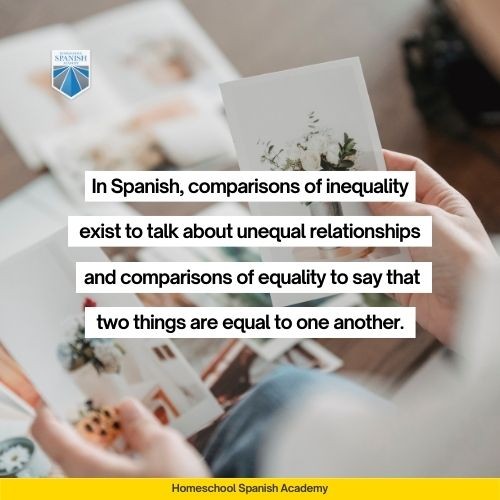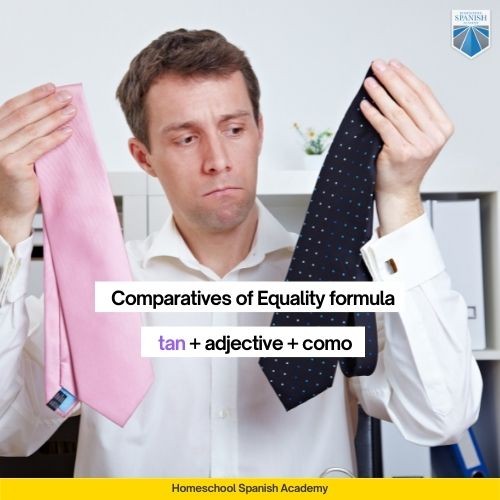Understanding comparatives is essential for anyone learning Spanish. They allow you to express relationships between things by indicating which is bigger, smaller, better, worse, or equal. This guide provides a detailed explanation of comparatives in Spanish, covering both regular and irregular forms, along with practical examples and tips to master their usage.
Forming Regular Comparatives in Spanish
Regular comparatives in Spanish are straightforward to construct. They involve using the words más (more) or menos (less) before an adjective, followed by que (than). The adjective must agree with the noun it modifies in gender and number.
Formula:
- More than: más + adjective + que
- Less than: menos + adjective + que
Examples:
- El coche es más rápido que la bicicleta. (The car is faster than the bike.) – más rápido agrees with the masculine singular noun coche.
- Las casas son menos caras que los apartamentos. (The houses are less expensive than the apartments.) – menos caras agrees with the feminine plural noun casas.
Irregular Comparatives in Spanish
Some Spanish adjectives have irregular comparative forms. These forms must be memorized as they don’t follow the standard más/menos pattern.
Common Irregular Comparatives:
| Adjective | Comparative | Translation |
|---|---|---|
| bueno/a | mejor | better |
| malo/a | peor | worse |
| grande | mayor | bigger, older |
| pequeño/a | menor | smaller, younger |
| joven | menor | younger |
| viejo/a | mayor | older |



Examples:
- Este libro es mejor que el otro. (This book is better than the other one.)
- Ella es mayor que su hermano. (She is older than her brother.)
Comparatives of Equality in Spanish
To express that two things are equal in a certain quality, use tan (as) before the adjective, followed by como (as). Alternatively, you can use igual de (just as) followed by the adjective and then como.
Formula:
- tan + adjective + como
- igual de + adjective + como
Examples:
- Ella es tan inteligente como él. (She is as intelligent as him.)
- El café es igual de caliente como el té. (The coffee is just as hot as the tea.)
Using Comparatives in Sentences: Practical Examples
Here are more examples demonstrating how comparatives are used in everyday Spanish conversations:
- ¿Puedes hablar más despacio? (Can you speak more slowly?)
- Me gusta ese más. (I like that one more.) This is a shortened form, implying “more than this one” or “more than the other one.”
- Este restaurante es menos caro que el otro. (This restaurant is less expensive than the other one.)
Mastering Comparatives: Tips and Practice
To solidify your understanding of comparatives, consider the following:
- Memorize irregular forms: Create flashcards or use mnemonic devices to learn the irregular comparative forms.
- Practice regularly: Incorporate comparatives into your daily Spanish practice through writing and speaking exercises. Try describing objects or people using comparisons.
- Immerse yourself in Spanish: Listen to Spanish conversations, watch movies, or read books to observe how comparatives are used in context.
By mastering comparatives, you’ll significantly enhance your ability to communicate effectively in Spanish. They are fundamental to expressing preferences, making comparisons, and describing the world around you.